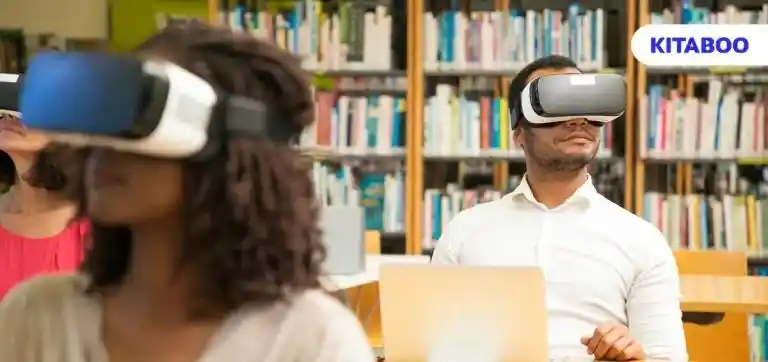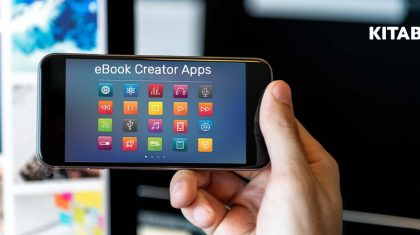
The Benefits of Using Educational Technology for Student Engagement
In the landscape of modern education, student engagement stands as a pivotal aspect. When students are engaged in the learning process, they are more likely to improve their academic performance.
A plethora of research underscores the correlation between heightened student involvement and superior educational results. Yet, maintaining a consistent level of engagement among students remains a significant challenge for educators. This is where educational technology (EdTech) technology can prove to be particularly helpful.
For instance, they can collaborate with digital textbook platforms, like KITABOO, to leverage tech tools for delivering interactive content. It not only makes learning more compelling but also tailors the experience to match the evolving needs and preferences of students in the long run.
In this post, we will explore the benefits of using EdTech to revolutionize student engagement and drive academic excellence.
Read on!
Table of Contents
What is Student Engagement?
Student engagement simply refers to the level of involvement of students with learning activities or academic courses as a whole.
Below are the three types of student engagement, each offering a unique perspective on how learners connect with their educational journey:
- Behavioral Engagement: This covers students’ participation and involvement in educational activities. It includes academic, co-curricular, and social activities.
- Emotional Engagement: This covers students’ feelings and emotional reactions towards their lessons, peers, teachers, and the overall learning experience.
- Cognitive Engagement: This covers students’ investment and involvement in their education. It also includes their self-regulation and motivation to achieve educational goals.
By using student engagement tools, you not only enhance the learning experience but also foster a deeper connection between the students and the curriculum.
Benefits of Using Educational Technology (Edtech) For Student Engagement
Educational Technology (EdTech) is the combined use of technological tools, digital platforms, and educational practices aimed at enhancing learning outcomes. This approach enables learners to gain greater autonomy over their learning and become more involved in the learning process.
Below are some benefits of using EdTech for student engagement:
1. Improved Personalized Learning
EdTech can facilitate personalized learning and provide instructional content aligned with the learning needs of each student. By leveraging AI and data analysis, EdTech platforms can identify actionable patterns in content consumption and provide customized learning paths.
This approach provides relevant support to students who are struggling to excel in a particular area. At the same time, it helps students who have mastered a particular concept to proceed to the next one.
Digital textbook platforms like KITABOO can prove to be of significant help in this context. The AI-powered KITABOO Insight tool can track content consumption, fostering the identification of the strengths and weaknesses of each student. Educators can deliver customized content based on individual student performance and level of learning, enhancing student engagement.
2. Enhanced Content Accessibility
EdTech makes instructional content and coursework easily accessible to students. With the proliferation of personal devices in the educational landscape, EdTech can deliver content that is compatible with different devices. Leveraging the accessibility and flexibility of these personal devices, EdTech can extend learning experiences at any time and from anywhere.
The integration of instructional content on multiple learning platforms and devices can incentivize student engagement.
3. Strengthened Student-Teacher Relationships
EdTech can improve student-teacher relationships and ensure enhanced educational experiences. By leveraging EdTech tools, educators can deliver instructional content in non-traditional ways, such as video modules, gamification, simulation, etc.
It reduces the need for classroom lectures, leaving educators with more time to plan classroom learning activities. Further, educators can connect with students on a one-on-one level and resolve their problems, establishing meaningful relationships in the process. They can encourage students to participate actively in the learning activities and boost engagement.
4. Refined Assessment and Feedback
Edtech provides opportunities for enhanced assessment and feedback on student progress and performance. These processes can help educators and students identify the areas for improvement and apply corrective measures accordingly.
Educators can implement formative assessments at strategic points in the content to monitor student progress. By providing real-time feedback, educators can motivate students to take ownership of their learning and become more engaged.
With KITABOO, educators can incorporate various formative assessment tools in their content. The implementation of interactive quizzes, puzzles, MCQs, video assignments, etc., can boost student engagement and encourage learning.
By analyzing the performance data of students, the platform can accurately assess their abilities and provide feedback for improvement. Real-time constructive feedback can help students to remain focused on their learning objectives.
5. Improved Collaborative Learning
EdTech enables peer-to-peer interaction and sharing of knowledge, fostering collaborative learning. By promoting communication, teamwork, and problem-solving skills, collaborative learning boosts student engagement. In this context, educational technology (EdTech) tools have emerged as effective resources for engaging in interactive learning experiences.
Educators can leverage EdTech tools to create discussion boards, online forums, and virtual study groups to promote student collaboration. They can encourage the active participation of students in collaborative assignments and group projects. Such collaborations can enhance the interpersonal and communication skills of students, which are essential qualities for progress and growth.
Conclusion
Educational technology (EdTech) has the potential to revolutionize education and transform the way learning is delivered. Educators can leverage EdTech to ensure several benefits for enhanced student engagement. It empowers educators to deliver personalized learning and make content more accessible to students through various formats and devices.
However, to realize such benefits of EdTech, educators and educational institutions need to invest in the right technological resources. This makes it vital for them to team up with a reliable EdTech platform.
In this regard, by collaborating with the digital textbook platform of KITABOO, educators can leverage cutting-edge EdTech tools for improved student engagement.
To learn more, connect with us now!
Write to us at contact@kitaboo.com to know more!
Suggested Reads:
Discover how a mobile-first training platform can help your organization.
KITABOO is a cloud-based platform to create, deliver & track mobile-first interactive training content.



